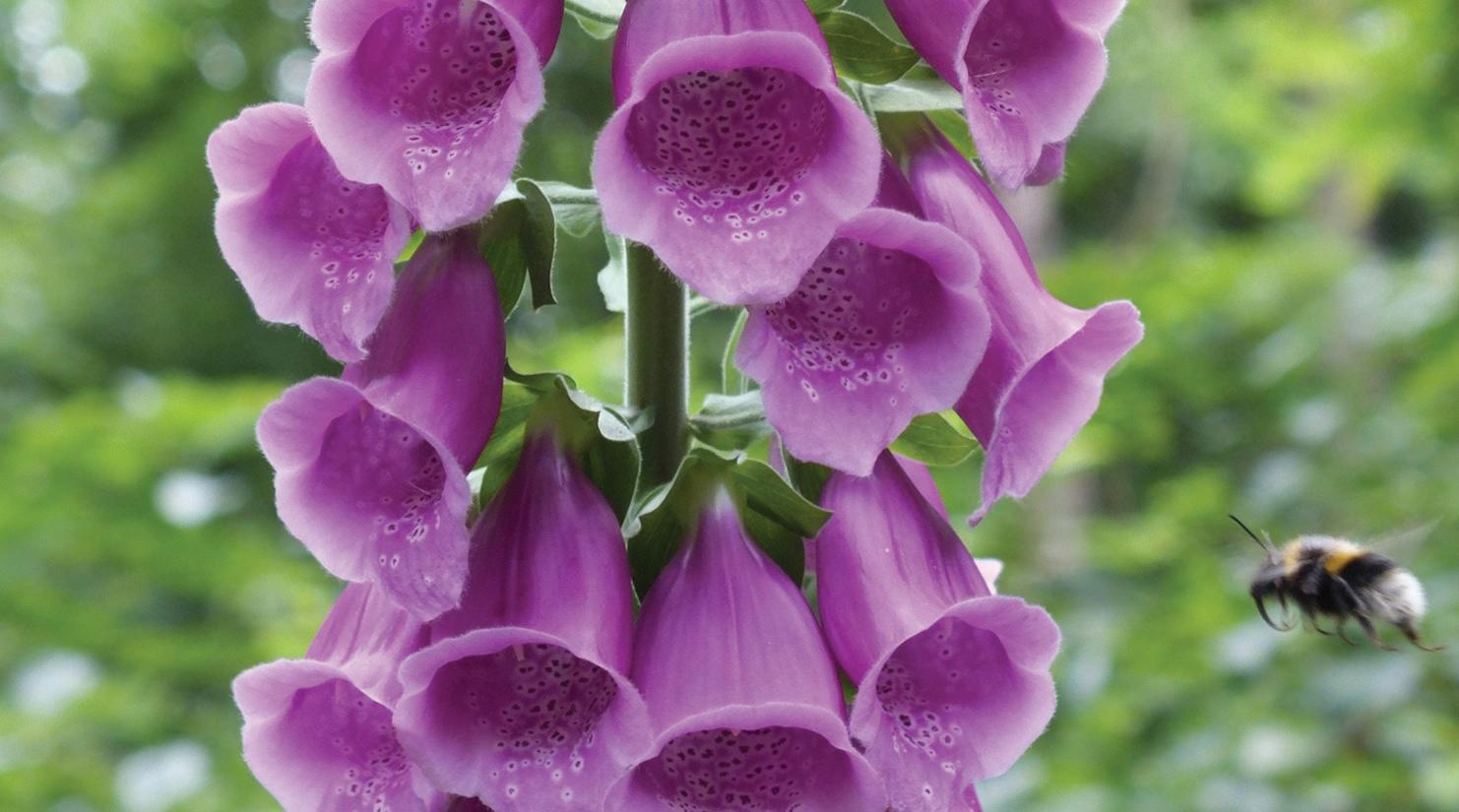
3 minute read
Weed Watch
Foxglove: Big, bold, beautiful, bad
The big, bright, tubular bellshaped flowers of foxglove are hard to miss at this time of year.
They are absolute knockouts for a few weeks, but once the showy flowers fade there’s nothing special about this invasive weed, which has a nasty sting in its tail for our native pollinators and natural biodiversity.
You see, foxglove is toxic. The only species that seems to benefit from a colony of foxglove is the introduced bumblebee, which competes with native bees for food and takes pollen without cross-pollinating native plants.
Each foxglove stalk can release tens of thousands of seeds that can travel far and wide and tolerate a range of conditions. Foxglove has been found from the dunes of Macquarie Harbour to at least 820m above sea level on kunanyi/Mt Wellington and many places in between.
There is now evidence the spread of foxglove has accelerated in recent years, possibly because the introduced bumblebee crosspollinates it, and also because Tasmanian winters are becoming milder.
In my observation, if left undisturbed, a colony of foxglove can triple in size every year, much faster than other annual weeds. In contrast, Spanish heath would increase by just a proportion over the same period of time without disturbance.
Taming foxglove
• Never walk past a new foxglove – if it’s new to the area, pull it out! That’s the easiest way to prevent a new infestation.
• Start in areas with low infestations of foxglove, taking out the outliers first. Don’t start in the worst patch.
• Start in winter or spring. If you wait until the flowers develop it’s much more work, the plants are bigger and you have to deal with millions of viable seeds.
• Disturb as little soil as possible.
• Get the main foxglove root out of the ground with a knife or sharp trowel, or cut and paint the stem with a hand-held dabber.
• Remove and bin the flower stalk. Be careful in late summer, as fine seeds will rain out of the flower stalk.
• Leave the plant high and dry, off the ground, and get most of the soil off the roots, otherwise it will continue to grow and develop seed. Or make a pile and check it every month or so.
• Do not brush-cut the plant – this will only encourage quick regrowth with multiple heads and stronger roots.
• Look after grass, buzzies, ferns, leaf litter and woodchip, which all help shield soil from new foxglove infestations, preventing germination
- Bec Johnson, Team Leader Bushcare







